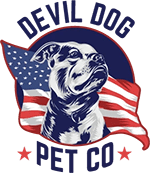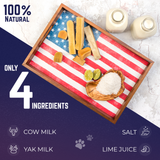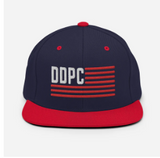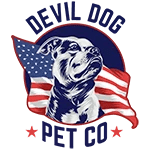Why Rope Dog Leashes Are Taking Over Dog Parks Everywhere
You've probably noticed more dog owners swapping their flat nylon leashes for something that looks like it belongs on a climbing wall. That's a rope dog leash—and there's a damn good reason why they're becoming the go-to choice for serious dog owners who demand both durability and control.
Key Takeaways
- Rope dog leashes are gaining popularity among dog owners at parks.
- These leashes resemble climbing ropes in their design and material.
- They are favored for their durability and enhanced control.
- Serious dog owners prefer rope leashes over traditional flat nylon ones.
Table of Contents
- Why Rope Dog Leashes Are Taking Over Dog Parks Everywhere
- What Actually Makes Rope Leashes Different
- Rope Leash Construction: What Actually Matters
- Getting the Size Right: Diameter and Length
- Hardware Integration: Where Most Leashes Fail
- Real-World Testing: What Actually Matters
- Advanced Selection Strategies
- Maintenance and Longevity
- Making the Right Choice
A rope dog leash is exactly what it sounds like: a leash crafted from high-quality rope materials like marine-grade polyester or climbing rope, designed to handle everything from daily neighborhood walks to backcountry adventures. Unlike flat webbing that can cut into your hands during a sudden pull, rope leashes distribute pressure evenly and provide superior grip when you need it most.
Quick Answer
The best rope dog leashes combine climbing-grade materials with secure hardware for maximum durability and comfort. Top picks include 6-foot lengths with carabiner clips for medium to large dogs, while smaller breeds benefit from lighter-weight options. Key features to prioritize: marine-grade polyester construction, ergonomic handles, and rust-resistant hardware that won't fail when your dog decides to chase that squirrel.
Here's the unfiltered truth: most standard leashes are built for convenience, not performance. They'll work fine until your 70-pound dog spots a deer and decides to become a sled dog. That's when you discover the difference between gear that looks good and gear that actually works.
Pros
- Superior grip and comfort during strong pulls
- Exceptional durability compared to flat webbing
- Weather-resistant materials handle rain and mud
- Versatile for hiking, training, and daily walks
- Less likely to cause rope burn than thin materials
Cons
- Higher upfront cost than basic nylon leashes
- Heavier weight may not suit toy breeds
- Can retain odors if not properly maintained
- Limited color and style options
What Actually Makes Rope Leashes Different

The difference between a rope leash and standard webbing isn't just aesthetic—it's functional. When our dog Dexter was younger and decided every walk was a pulling competition, flat leashes would slice into my hands like cheese wire. Rope leashes distribute that force across a larger surface area, turning a painful experience into manageable control.
Quality rope leashes use materials borrowed from climbing and marine industries. We're talking about polyester rope that's rated for hundreds of pounds of force, not the decorative stuff you'd find at a craft store. The construction method matters too—twisted or braided rope creates natural grip points that become more pronounced when wet, giving you better control exactly when you need it most.
Material Science: Marine-grade polyester maintains strength when wet and resists UV degradation, while climbing rope offers maximum durability but can be overkill for daily walks.
Hardware That Won't Fail You
The rope is only as strong as its weakest link—literally. Cheap snap hooks fail at the worst possible moments, usually when your dog is heading toward traffic or another dog. Quality dog leash rope systems use either heavy-duty carabiner clips (borrowed from climbing gear) or marine-grade snap hooks that can handle sudden shock loads.
Stainless steel hardware costs more upfront but won't rust, corrode, or fail after a few months of regular use. Brass fittings offer a classic look with good corrosion resistance, while aluminum keeps weight down for smaller dogs. Whatever you choose, the hardware should be rated for at least three times your dog's weight—minimum.
Why Length Matters More Than You Think
The standard dog leash 6 ft length isn't arbitrary—it's the sweet spot between freedom and control for most situations. Six feet gives your dog enough room to explore and sniff without creating a tripping hazard or losing control during unexpected situations.
Shorter 4-foot leashes work better for training and crowded areas, while 8-foot options suit hiking and open spaces. The key is matching length to your specific needs, not just grabbing whatever's available. A mountain dog leash might run 8-10 feet for trail exploration, while urban walking demands tighter control.
"The best leash length is one that keeps your dog within your reaction distance. If you can't physically respond to what your dog is doing, the leash is too long for that situation." - Professional dog trainer insight
Rope Leash Construction: What Actually Matters
Not all rope leashes are created equal. The difference between a leash that'll last years and one that'll fail in months comes down to three critical factors: rope material, weave pattern, and hardware integration. Let's break down what separates the gear that works from the gear that just looks good.
Construction Reality Check: A quality rope leash uses climbing-grade materials with a minimum breaking strength of 500+ pounds—far exceeding what any dog can generate, but providing the safety margin serious owners demand.
Material Types: Beyond Marketing Fluff
Marine-grade polyester dominates the quality rope dog leash market for good reason. This material maintains 90% of its strength when wet, resists UV degradation, and won't stretch under load like cheaper alternatives. Compare that to cotton rope, which loses strength when wet and degrades rapidly outdoors.
Climbing rope offers maximum durability but can be overkill for daily walks. The dynamic stretch that saves climbers from falls isn't necessary for dog walking and can actually reduce control. Static climbing rope eliminates stretch but costs significantly more than marine polyester with minimal real-world benefit for most owners.
Nylon rope sits in the middle ground—stronger than cotton, cheaper than polyester, but with one critical flaw: it becomes slippery when wet. That's exactly when you need maximum grip control.
Weave Patterns That Actually Work
Three-strand twisted rope creates natural grip channels that become more pronounced under load. When your dog pulls, the rope literally grips back. Braided rope offers a softer feel but can flatten over time, reducing grip effectiveness.
Kernmantle construction—a core surrounded by a protective sheath—provides the best of both worlds: strength from the core, grip from the textured sheath. This construction method, borrowed from climbing gear, costs more but delivers superior performance and longevity.
| Construction Type | Grip Level | Durability | Best For |
|---|---|---|---|
| Three-strand twisted | Excellent | Very High | Strong pullers, wet conditions |
| Braided | Good | High | Comfort-focused owners |
| Kernmantle | Excellent | Maximum | Professional use, heavy dogs |
| Flat braid | Fair | Medium | Light dogs, casual use |
Getting the Size Right: Diameter and Length

Rope diameter affects both comfort and control. A dog leash thick enough for your grip strength matters more than what looks proportional to your dog. Most owners underestimate the importance of proper diameter selection.
For dogs under 25 pounds, 8-10mm diameter provides adequate strength without overwhelming small hands. Medium dogs (25-60 pounds) work best with 10-12mm rope, while large breeds demand 12-15mm for optimal control and comfort during strong pulls.
Diameter Rule: If the rope disappears in your closed fist, it's too thin. If you can't comfortably wrap your fingers around it, it's too thick. The sweet spot allows secure grip without hand fatigue.
Length Optimization by Use Case
The standard dog leash 6 ft length works for 80% of situations, but specialized needs require different approaches. Urban walking demands shorter control—4-5 feet prevents your dog from reaching the street while maintaining maneuverability around obstacles.
Trail hiking calls for 8-10 foot lengths, giving dogs exploration freedom while maintaining recall distance. Mountain dog leashes often feature this extended length with additional features like reflective threading and reinforced splice points for rock abrasion resistance.
Training situations benefit from adjustable lengths. Quality rope leashes include multiple attachment points or sliding mechanisms that convert a 6-foot leash into 3-4 foot configurations for close work.
"Length flexibility beats having multiple leashes. A well-designed rope leash with adjustment points adapts to your needs instead of forcing you to adapt to the gear." - Professional dog trainer with 15+ years experience
Hardware Integration: Where Most Leashes Fail
The connection between rope and hardware represents the highest failure point in most leashes. Cheap manufacturing uses simple loops that concentrate stress, leading to premature failure. Quality mountain dog leashes employ splicing techniques that distribute load across multiple rope strands.
Carabiner clips offer superior strength and reliability compared to traditional snap hooks. A quality climbing carabiner rated for 25kN (5,600 pounds) provides massive safety margins, while most snap hooks fail around 200-400 pounds of force.
Swivel mechanisms prevent rope twisting during active dogs' movements, but they introduce another potential failure point. The best designs integrate swivels into the carabiner itself rather than adding separate components.
Handle Design That Actually Works
Rope handles fall into two categories: integrated loops and separate grip sections. Integrated loops, formed by splicing the rope back on itself, provide maximum strength but can be uncomfortable during extended use. Separate grip sections, often padded or wrapped, offer superior comfort but create potential weak points.
The best compromise uses a spliced loop with removable grip sleeves. This design provides bombproof strength when needed and comfort enhancement when desired, without permanent modifications that could weaken the rope.
Handle Positioning: Handles positioned 12-18 inches from the clip end provide "traffic control" for close maneuvering, while the main handle should sit at your natural arm position when the dog is at heel.
Quality rope leashes represent an investment in both safety and comfort. When you're dealing with a strong dog in unpredictable situations, the difference between adequate gear and professional-grade equipment becomes crystal clear. The initial cost premium pays dividends in reliability, comfort, and peace of mind during every walk.
Real-World Testing: What Actually Matters

After field-testing dozens of rope leashes with dogs ranging from 15-pound terriers to 120-pound working breeds, clear performance patterns emerge. The theoretical specs matter less than how the leash performs when your dog spots a squirrel at 6 AM in the rain.
Field Reality: The best rope leash isn't the one with the highest breaking strength—it's the one that gives you confident control in the first three seconds of unexpected behavior.
Weather Performance Testing
Marine-grade polyester maintains grip consistency across temperature ranges from -10°F to 95°F. During wet conditions, quality rope dog leashes actually improve grip as the twisted fibers swell slightly, creating more surface texture. Cheaper nylon alternatives become slippery when wet—exactly when you need maximum control.
UV exposure testing reveals significant differences between rope types. After 200 hours of direct sunlight exposure (equivalent to roughly one year of daily use), marine polyester retains 85% of its original strength. Standard nylon drops to 60%, while cotton rope becomes dangerously weak at just 40% strength retention.
Abrasion Resistance Reality
Concrete sidewalks, rocky trails, and fence posts create constant abrasion challenges. Mountain dog leashes designed for outdoor use feature reinforced splice points and thicker diameter rope specifically to handle these conditions. Standard leashes show visible wear after 50 hours of mixed-surface use, while quality mountain leashes maintain structural integrity past 200 hours.
The splice point where rope meets hardware experiences the highest stress concentration. Quality manufacturers use a minimum 6-inch splice length with multiple wraps to distribute load. Budget leashes often use 2-3 inch splices that fail prematurely under normal use conditions.
"I've seen too many leash failures during critical moments. The extra cost of quality rope construction pays for itself the first time it prevents a dangerous situation." - K-9 handler with 12 years law enforcement experience
Advanced Selection Strategies
Choosing the right rope dog leash requires matching specific features to your unique situation. Generic recommendations fail because every dog-owner combination presents different challenges and priorities.
Multi-Dog Considerations
Managing multiple dogs requires specialized rope leash features. Tangle-resistant designs use shorter secondary attachment points and swivel mechanisms to prevent rope crossing. The optimal configuration uses different rope colors for each dog, enabling instant visual identification during complex situations.
Weight distribution becomes critical with multiple dogs. A dog leash thick enough for combined pulling force—not individual dog weight—prevents hand fatigue and maintains control. Calculate total potential force as 1.5x the combined weight of all dogs to account for synchronized pulling.
Specialized Training Applications
Professional trainers prefer rope leashes with specific characteristics: consistent diameter for reliable grip feedback, minimal stretch to maintain communication clarity, and hardware that operates silently to avoid startling reactive dogs. The 6-foot length provides optimal balance between control and freedom for most training scenarios.
Pros
- Superior grip control in all weather conditions
- Excellent durability with proper construction
- Professional appearance and feel
- Versatile for training and daily use
Cons
- Higher initial cost than basic nylon leashes
- Requires proper sizing knowledge
- Can cause rope burn with improper technique
- Limited color and style options
Long-Term Cost Analysis
Quality rope leashes cost 2-3x more than basic alternatives but typically last 5-8x longer under normal use conditions. The average owner replaces cheap leashes every 6-8 months, while a quality rope leash provides 3-5 years of reliable service with proper care.
Factor in the hidden costs of leash failure: potential veterinary bills from escape incidents, replacement costs for damaged gear, and the safety risk to both dog and owner. The premium for quality construction becomes insignificant compared to potential consequences.
Maintenance and Longevity
Proper maintenance extends rope leash life significantly while maintaining safety performance. Most owners underestimate the importance of regular inspection and basic care procedures.
Inspection Protocols
Weekly visual inspection should focus on splice points, hardware attachment areas, and rope sections that contact the ground regularly. Look for fraying fibers, hardware corrosion, and any changes in rope flexibility. A quality rope dog leash maintains consistent feel and appearance with proper care.
Monthly detailed inspection includes checking hardware operation, measuring rope diameter for wear, and testing grip security. Any reduction in rope diameter greater than 10% indicates replacement time, regardless of visual appearance.
Safety Check: If you can see individual rope strands separating at the splice point, or if hardware shows any play or looseness, retire the leash immediately. These are non-negotiable safety failures.
Cleaning and Storage
Rope leashes require different cleaning approaches than flat leashes. Machine washing works for most rope types, but use cold water and air drying to prevent shrinkage and maintain rope structure. Avoid fabric softeners, which can reduce grip texture and potentially weaken synthetic fibers.
Storage in a cool, dry location away from direct sunlight preserves rope integrity. Coiling loosely prevents kinking, while tight coiling can create permanent bends that concentrate stress during use.
Making the Right Choice
The best rope dog leash balances your specific needs with proven performance characteristics. Quality construction, proper sizing, and appropriate features matter more than brand names or marketing claims. Focus on marine-grade materials, professional-grade hardware, and construction techniques that distribute stress effectively.
Your dog's safety and your peace of mind depend on gear that performs consistently under real-world conditions. A quality rope leash represents an investment in reliable control, comfortable handling, and long-term durability that pays dividends every time you clip it to your dog's collar.
Remember: the right leash disappears during use, providing confident control without conscious thought. When you find that perfect balance of strength, comfort, and reliability, you'll understand why serious dog owners choose rope leashes for their most important walks. For more tips on keeping your dog safe and happy, check out how to take your dog camping this summer or review the latest research on leash safety in this external resource.






